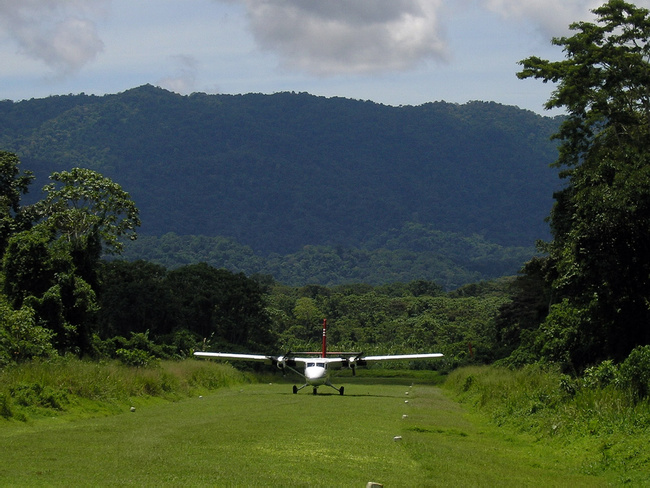
Santa Cruz de Cana
Santa Cruz de Cana is one of the most remote places in Panama. Set within the middle of the Darién National Park, Santa Cruz de Cana (more commonly known as Cana) offers travelers true wilderness. There are no roads here and the closest village, Boca de Cupe, is a 2–3 day hike.
More about Santa Cruz de Cana
Cana lies in a valley along the eastern slope of Cerro Pirre (elevation 5,300 ft.). Despite its extreme isolation, Cana had a major role in the history of Panama. In 1665, the Spanish found gold here and erected massive mines to unearth it. The gold mines became some of the richest in the Americas and contributed to the rising population of Cana, which reached 20,000 people at its peak. Pirate attacks and disease, however, forced the Spanish to close the mines in 1727.
The mines remained closed for almost a hundred years before an Anglo-French company reopened them in the 19th century. They were productive enough to warrant building a railroad to Boca de Cupe, which connected Cana with the rest of Panama. However, the mines were eventually abandoned and again swallowed by the jungle.
These days Cana is known for its outdoor riches. The wildlife and bird watching here is better than most other places in Panama—it’s even been called one of the world’s 10-greatest birding sites. Near the field station, you can spot red-and-green, blue-and-yellow, great green, and chestnut-fronted macaws. You might also see several kinds of manakins, eagles, hummingbirds, and tanagers.
Birding aside, visitors to Cana may spot an assortment of other creatures, including spider and howler monkeys. There are herds of white-lipped peccaries in the area that sometimes descend upon the station. The peccaries are fast and have sharp teeth, so be careful if you see them. Baird’s tapirs – the largest land mammal in Central America – also live nearby, although you’ll need luck to spot one.
Cana lies within a low valley and is surrounded by premontane forest. There are wonderful hiking trails winding through the wilderness here—however, if you want to explore these, it’s essential to go with a guide. A wrong turn could leave you lost in the jungle.
The Boca de Cupe Trail leads all the way to Boca de Cupe and takes at least two days to complete. It’s a long hike, but the trail is flat and offers travelers good opportunities to spot wildlife.
There are other (and closer) trails that offer fantastic looks into the forest and old mining operations. The Pirre Mountain Trail is an arduous, 5.5-mile (9-km) ascent up Cerro Pirre. It winds through beautiful primary forests and leads to the peak of the mountain. There is a kitchen and basic sleeping facilities here.
Other trails, like the Machinery Garden Trail and Seteganti Trail, stay closer to the station but still serve up lovely scenery.
The easiest way to get to Cana is by air on a small chartered plane. It’s expensive, but is much easier and far more comfortable than the 2-3 day hike in from Boca de Cupe.
We believe travel is more than ticking destinations off a list – it’s about discovering new places deeply, feeling connected wherever you go, and knowing you have a trusted team behind you every step of the way.



